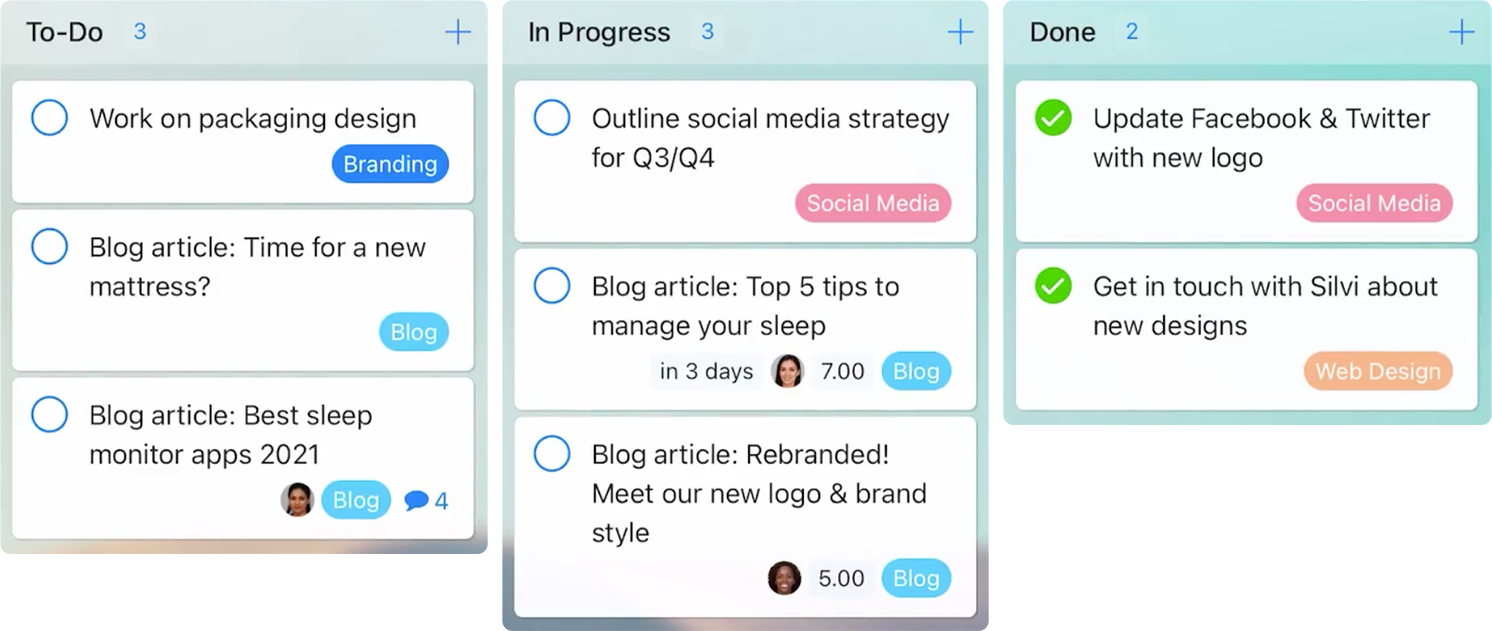
Traditional project management derives from the I.T., manufacturing, and construction industries, however, they are no longer the only fields that apply project management practices. In this article, we’ll take a look at how project management goes down in the creative industry.
What Is Creative Project Management?
Creative project management is the process of leading and guiding a group of creative professionals toward a common goal or project outcome. It combines project management techniques with creativity and innovation to achieve project success in a creative and efficient manner.
The focus of creative project management is on managing projects that necessitate creative problem-solving, such as developing a new product, designing a marketing campaign, or creating a work of art. Understanding the creative process, managing timelines, budgets, and resources, and effectively collaborating with creative professionals are all part of this.

Creative project managers must be well-versed in project management principles as well as creative processes. They must be able to balance the needs of the project with the needs of the creative team, as well as communicate effectively with all project stakeholders.
Overall, creative project management is concerned with managing the complexities of a creative project in order to complete it on time, on budget, and to a high standard of quality.
How Does “Creative” Differ from “Traditional” Project Management?
The primary distinction between creative and traditional project management is the nature of the projects under management. Traditional project management focuses on more structured, predictable projects, whereas creative project management focuses on projects that require a high level of creativity and innovation.
The following are some key distinctions between creative and traditional project management:
1. Project Goals
The goal of creative project management is to achieve a specific creative result, such as developing a new product or designing a marketing campaign. The goal of traditional project management is frequently to deliver a specific product or service to a client or stakeholder.
2. Project Planning
Iterative planning is common in creative projects, where ideas are generated, tested, and refined over time. Traditional projects, on the other hand, typically have a more linear planning process in which a detailed project plan is developed ahead of time and closely followed throughout the project.

Don't let project management be a headache.
Get started with our easy-to-use project management software for free today!
3. Team Structure
Creative projects frequently involve a more fluid team structure, with team members from various disciplines and backgrounds collaborating and generating ideas. In contrast, traditional projects typically have a more hierarchical team structure with clearly defined roles and responsibilities.
4. Risk Management
Creative projects are often riskier because the outcome is less predictable and may require more experimentation and iteration. Traditional projects, on the other hand, have a narrower scope and a lower level of risk.
Overall, because project goals and outcomes may change throughout the project lifecycle, creative project management necessitates a more flexible and adaptable approach. To achieve successful project outcomes, it is also necessary to place a strong emphasis on collaboration, creativity, and innovation.
How to Become a Creative Project Manager
Typically, becoming a creative project manager necessitates a combination of education, experience, and creative skills. Here are a few steps to becoming a creative project manager:
1. Acquire a Degree in Project Management
I know how it sounds. Saying “just go and get a degree in project management” probably isn’t (ironically) the most creative piece of advice. However, a project management degree provides a solid foundation in project management principles such as project planning, risk management, and stakeholder management. It is most likely the simplest path to becoming a creative project manager. Although, of the steps listed here, it is probably not the most cost-effective.
2. Develop a Creative Skillset
Creative project management requires a thorough knowledge of the creative process as well as the ability to manage and collaborate with creative professionals. It can be beneficial to learn skills in areas such as design, art, marketing, or writing.
3. Gain Experience
Look for opportunities to gain project management experiences, such as internships, volunteer work, or entry-level positions. This will assist you in developing practical skills and learning how to apply project management principles in the real world.
4. Build a Portfolio
Build a portfolio of your work as you gain experience to showcase your project management and creative abilities. Project plans, timelines, and budgets, as well as examples of creative projects you have managed, could all be included.
5. Develop Soft Skills
Strong communication, leadership, and collaboration skills are required for creative project management. Concentrate on honing these soft skills, which are essential for success in this role.
6. Continue Learning
Because creative project management is a constantly evolving field, it is critical to stay current on industry trends and best practices. Attend conferences, read industry publications, and pursue courses or certifications to keep learning and growing.

Overall, becoming a successful creative project manager usually requires a blend of project management knowledge, creative abilities, and soft skills such as communication and leadership. You can excel in this exciting and rewarding field by establishing a solid foundation of knowledge and experience.
11 Best Practices for Managing a Creative Team
Managing a creative team can be challenging because of the unique nature of creative work. The job of a creative project manager involves a high level of engagement and relationship development. This is because, in order to anticipate a fruitful outcome, you must first get to know your team and understand their nuances.

So, for those interested in pursuing this career path or simply honing their skills, here are some best practices for managing a creative team:
1. Recognize the Preconditions for Creativity
Working in a creative environment means that you will most likely be dealing with “right-brained” individuals. According to the left brain/right brain theory, these people are more visual and intuitive and have a harder time following stringent rules than their logical, facts-driven, left-brained counterparts. As the person whose job it is to create processes and plans, you must consider the quirks and characteristics that come with working with creative people.
2. Have Empathy
A creative project involves a much higher level of emotion than a technical project. The creative process can be difficult, which is why a good creative project manager must be compassionate. You must give your team enough time and space to execute their ideas while also remaining approachable, so they know you are available to them.
3. Possess Impeccable Communication Skills
Being a project manager entails acting as a liaison between clients and your team. You must communicate what each group expects from the other while also mediating any disagreements that arise.

It can be difficult for visual thinkers to express their ideas to non-visual thinkers, which is why a project manager’s communication skills are especially important in the creative industry.
4. Refresh Your Industry Knowledge
Knowing the ins and outs of the creative industry allows you to be a more credible project leader and truly maximize the talents and skills of your team. It also allows you to better forecast project accuracy and identify the best resources for your team to use, such as quality creative project management software.
5. Be Creative!
Managing a group of creatives demands some originality. You may be required to think outside the box in order to optimize your team’s skills while adhering to the budget and timeline and keeping your clients satisfied. For example, if deadlines are said to suffocate creativity, you could provide your team with soft target dates to work toward as an alternative. Instead of imposing rigid rules, give them parameters to work with.

Encourage a culture that promotes creativity and innovation. Allow your team to take risks and try new things. Celebrate successes, no matter how small, and encourage your team to learn from their failures.
6. Establish Clear Objectives and Expectations
Communicate your project goals and expectations clearly. Ensure that everyone on the team understands their responsibilities and what they must deliver.
7. Encourage Cooperation
Encourage your team members to collaborate and share their ideas. Collaboration can produce better results and help your team members develop their skills.
8. Give Feedback and Acknowledgement
Give your team members regular positive and constructive feedback on their work. Recognize and celebrate their accomplishments and successes.
9. Provide Resources and Tools
Ensure that your team has access to the tools and resources they require to complete their tasks effectively. This could be in the form of software, hardware, or training.
10. Believe in and Empower Your Team
Trust your team to do a good job and give them the authority to make decisions. Give them the freedom they need to be creative and take ownership of their work.
11. Be Flexible
Because creative work can be unpredictable, be prepared to be adaptable in terms of deadlines, processes, and expectations. Be open to new ideas and approaches and be ready to adapt as necessary.

By following these tips, you can effectively manage your creative team and help them deliver great results.
Final Thoughts
Managing projects in the creative industry is a whole other ball game compared to working in technical fields of work. On top of the usual organization, diligence, adaptability, and relationship management required, creative project management needs a more inventive approach to ensure your team is efficient and on task, and is maximizing their creativity.
FREE 20 MIN. CONSULTATION WITH A PROJECT MANAGEMENT EXPERT
Wanna see how to simplify your workflow with Zenkit in less than a day?
Book a Live Demo




Leave a Reply